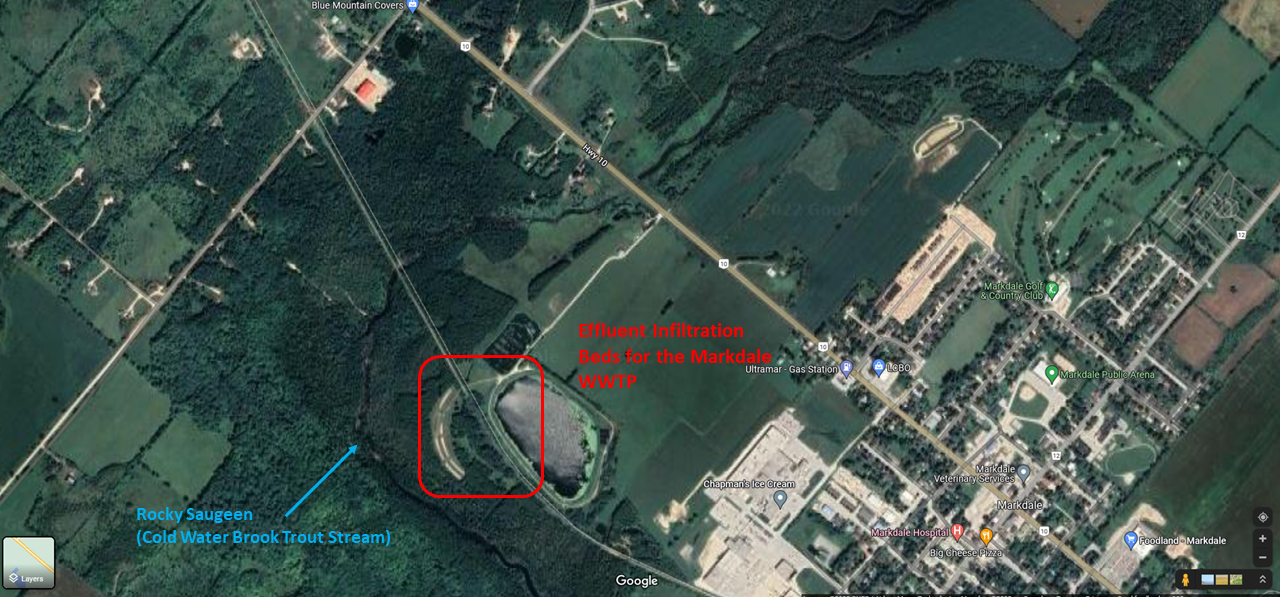INGROUND INFILTRATION
One option to keep the effluent cool, as well as providing extra treatment, is to discharge this the effluent into the ground on the treatment plant site.
The slow percolation of the effluent through a large gravel deposit is ideal to provide additional treatment, as well as cool and dilute the effluent as it infiltrates through the gravel, mixes with groundwater and enters the West Credit River.
Effluent infiltration systems have been used successfully in Ontario in the Village of Markdale to protect the Rocky Saugeen River, a coldwater Brook Trout habitat, and in Lucknow to protect the Nine Mile River. These infiltration systems have been working well for several years and the wastewater treatment facilities have apparently had no measurable impact on local Brook Trout streams.

This Erin wastewater treatment plant is ideally suited for inground disposal of effluent for the following reasons:
- The travel time underground of the infiltrated effluent and the mixing with groundwater flowing toward the West Credit River will provide the best guarantee that the effluent will be cooled to normal background groundwater temperatures (i.e., 9°C)
- The treated effluent should be ultra-clear water with no solids due to the membrane treatment provided in the sewage treatment plant. This leaves little risk of clogging of the infiltration bed or the sands and gravel with solids over time.
- The geotechnical report for the project identifies the soils below the treatment plant site as being largely sand and gravel. This geology would allow the infiltrated effluent to generally flow straight down until it reaches the groundwater table.
- Inground disposal of effluent would also provide additional treatment and removal of ammonia and phosphorus in the effluent.
Read more about inground infiltration in the following report